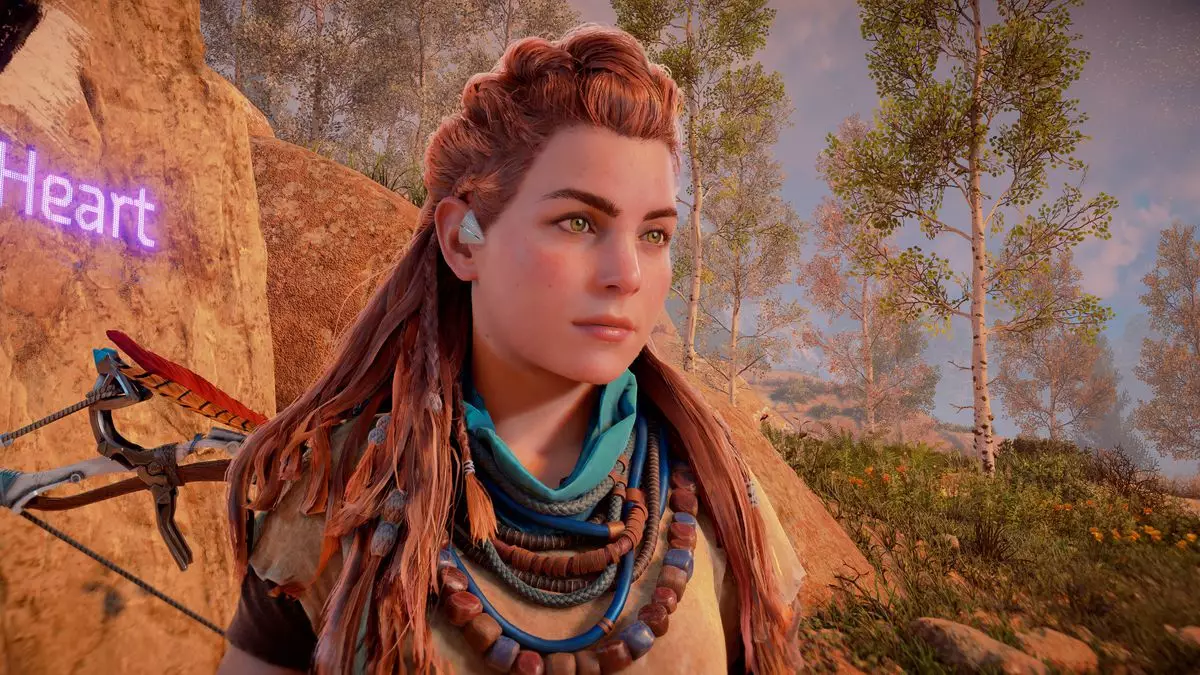The gaming world erupted with excitement when word emerged about a remastered version of Guerrilla Games’ critically acclaimed title, Horizon Zero Dawn. Fans of the original game were understandably concerned about the potential performance implications of this update, especially for PC gamers using handheld devices such as the Steam Deck. The absence of a verified version for the Steam Deck raised red flags for many. However, after testing the game on a high-performing handheld, specifically the Asus ROG Ally X, the fears regarding compatibility on multiple platforms, including the Steam Deck, may have been overstated. This remastered edition, crafted in collaboration with Nixxes Software, aims to redefine the visual aesthetics and overall gaming experience without altering the foundational gameplay mechanics that fans cherished.
One of the most striking features of the remaster is the extensive visual overhaul that it has undertaken. While it is not a complete remake—retaining the core gameplay elements from the original—it boasts an impressive array of upgraded graphics. The world of Horizon Zero Dawn now presents itself with richer textures, enhanced lighting effects, and a plethora of visual effects that significantly elevate the graphics beyond what the original could offer, drawing favorable comparisons to its sequel, Horizon Forbidden West. The density of the environments, particularly in larger cities, has seen a marked improvement, evoking a more immersive atmosphere that reflects a world reclaimed by nature.
This remastered edition weighs a substantial 105 GB, making it 33 GB more comprehensive than its predecessor, which might raise alarms for players with limited storage. Yet, this extra bulk seems justified considering the revamping of character and environmental models, which rejuvenate the game without losing the charm of the original design. Despite familiarity, many elements feel intriguingly refreshed—a clever reimagining of familiar features that evoke nostalgia while simultaneously introducing players to new visual splendor.
Performance Tuning: A Balancing Act
While graphical fidelity is paramount, remastering a game for varied platforms inevitably involves performance trade-offs. Enthusiasts of the original title may be eager to crank up the settings for maximum visual impact, but achieving this comes with performance challenges. Testing on the Asus ROG Ally X yielded approximately 42 frames per second (fps) at low settings in the original, but the remaster dips to around 25 fps at similar settings and only slightly better when reduced to the lowest quality. Fortunately, the modern upscaling solutions like AMD’s FSR and Nvidia’s DLSS provide vital performance headroom that many players will certainly appreciate.
By employing FSR Balanced upscaling and frame generation technologies, performance on lower-quality presets can reach near 60 fps, a testament to the effective optimizations incorporated into this remaster. However, players should remain aware of inconsistencies that may arise, such as some character models exhibiting unnatural light glows or surface reflections that can distort the visuals. Yet, these issues are relatively minor against the backdrop of the remaster’s overall stability—a welcome change from the variable performance levels of the original release.
When it comes to accommodating various gaming setups, Horizon Zero Dawn Remastered seems to acknowledge a wide range of hardware capabilities. While direct performance tests on the Steam Deck remain unverified, the options included in this remaster are designed to suit different configurations and specifications, hinting at a commitment to inclusivity. Gamers utilizing lower-end or older systems may still experience satisfying gameplay by adjusting settings to low or very low while leveraging FSR upscaling for optimal performance. Moreover, considering the game’s pacing is relatively measured compared to more frantic action titles, the inherent lag induced by interpolation does not detract from the quality of the experience.
Ultimately, Horizon Zero Dawn Remastered serves as a reminder that the intersection of innovation and nostalgia can yield positive results. Although it retains the structural integrity of the original game, the graphical advancements and performance optimizations present an enhanced experience that welcomes both returning players and newcomers. Despite minor performance hitches and some graphical inconsistencies, the eagerness of gamers to revisit Aloy’s journey reflects the enduring legacy of the game. For those lucky enough to dive back into this stunning open-world adventure, the remaster promises to serve as an enticing gateway to explore the lush landscapes of a post-apocalyptic Earth once more. The evolution of Horizon Zero Dawn is here, and it is undoubtedly worth a closer look.

